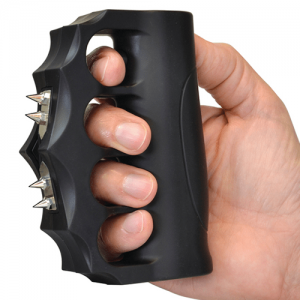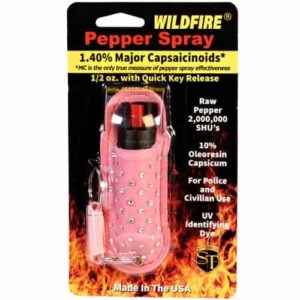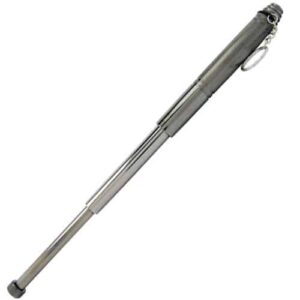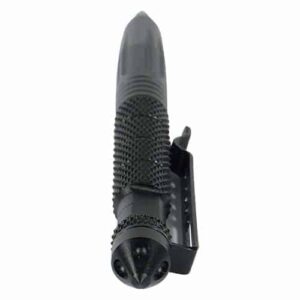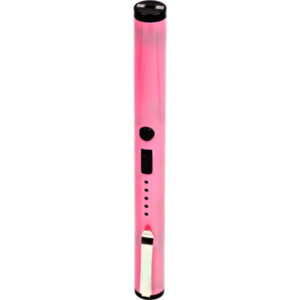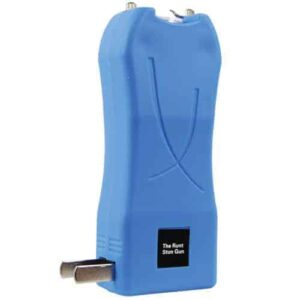You wouldn’t wish it on your worst enemy: the burning sensation, excruciating pain and temporary blindness that comes from pepper spray in your eyes. The severe discomfort and near incapacitation make it an effective tool in personal defense and law enforcement. Yet learning about the science behind this aerosol substance, its effects on the human eyes and the best ways to alleviate its pain gives you a better understanding of what you might encounter. So, buckle up for a thrilling ride through the fiery world of pepper spray.
Table of Contents
ToggleWhat is Pepper Spray?
Definition and Composition
When it comes to personal safety methods, pepper spray frequently comes to mind. But what exactly is it? Pepper spray, otherwise known as oleoresin capsicum (OC) spray, is a lachrymatory agent or, in simpler terms, a substance that irritates the eyes and induces tears or even temporary blindness. It is made from a concentrate of capsaicin, the active ingredient in chili peppers, extracted via various methods. Its potency lies in capsaicin’s ability to trigger an inflammatory response, acting as a deterrent and providing valuable time for potential victims to escape dangerous situations.
Types of Pepper Spray
There are several types of pepper spray available on the market, differentiated primarily by their spray pattern. Cone sprays, for example, disperse in a wide pattern making them easier to aim, but susceptible to wind interference. Stream sprays have a more focused target area and are less likely to be blown back in your face. Fogger sprays create a misty fog and are ideal for handling multiple attackers. Lastly, foam and gel sprays stick to the target’s face and are suitable for close-range defense.
Legal Considerations
Though pepper spray can be a crucial instrument for self-defense, it’s essential to understand that its usage is legally regulated in many jurisdictions. Before purchasing or carrying pepper spray, ensure you’re familiar with local laws, restrictions, and proper usage guidelines to avoid potential legal issues.
Effects of Pepper Spray on the Eyes
Immediate Impact
The immediate impact of getting pepper spray in the eyes is intense pain. It’s similar to the burning sensation you’d experience if you accidentally touched your eyes after handling hot peppers but amplified significantly. This reaction is involuntary and instant, causing eyes to forcibly close.
Inflammation and Irritation
The capsaicin in pepper spray causes inflammation and irritation. Your eyes may become red, swollen, and watery as they try to rid themselves of the irritant. You may also experience a stinging or burning sensation due to the inflammation of the mucous membranes.
Temporary Vision Impairment
One of the main purposes of pepper spray is to temporarily impair the vision of an assailant. This is achieved by severe eye irritation causing involuntary closure and tears, often resulting in temporary blindness lasting from 15–30 minutes.
Long-term Consequences
Although the potency of pepper spray can lead to severe immediate effects, most people recover fully with appropriate treatment. However, prolonged and unprotected exposure to pepper spray can potentially result in more significant injuries, like corneal abrasions or even damage to the respiratory tract.

First Aid for Pepper Spray in Eyes
Safety Precactions
When it comes to first aid, safety comes first. To avoid further injury, move away from the source of pepper spray and find a comfortable area to rest. It is recommended not to touch your eyes as it could spread the irritant further.
Immediate Steps to Take
Following exposure, blink rapidly to encourage tear production and natural cleansing of the eye. Also, trying to keep calm can play a significant role in facilitating recovery.
Rinsing the Eyes
Rinsing your eyes with water or saline solution can help alleviate the burning sensation. Avoid using anything other than water unless directed by a medical professional. Also, remember the direction of the rinse – always from the inside corner of the eye to the outside to avoid contaminating the other eye.
Seeking Medical Attention
Though most pepper spray effects resolve spontaneously, It’s essential to seek medical attention if pain persists after decontamination, vision doesn’t return to normal after several hours, or if you are having difficulty breathing.
Tips for Dealing with Pepper Spray Exposure
Prevention and Awareness
Familiarity with your surroundings, awareness of potential threats, and preventive measures can decrease the chances of needing to use pepper spray or being exposed to it.
Self-defense Techniques
Learning proper self-defense techniques can help fend off attackers without relying on pepper spray. Martial arts, for instance, can be a practical and empowering alternative.
Protective Measures
Whenever handling pepper spray, protective measures like gloves and masks can prevent accidental self-contamination.

Understanding the Effects of Capsaicin
Capsaicin and its Role in Pepper Spray
Capsaicin is the “heat” component of chili peppers and the primary substance in pepper spray. Its role entails stimulating pain-sensing nerve endings, causing the severe discomfort that makes pepper spray effective.
Capsaicin’s Interaction with the Eyes
When capsaicin contacts the eye surface, it binds to pain receptors, triggering a burning sensation and inflammation. This leads to involuntary blinking, treating, and temporary blindness, all common responses to pepper spray.
Mechanism of Action
Capsaicin causes the release of a neurotransmitter called substance P, which sends pain signals to the brain and triggers inflammatory reactions. This response to pepper spray is rapid and temporary.
Factors Affecting the Severity of Pepper Spray Injuries
Concentration and Potency
The intensity of pepper spray’s effects directly correlates with its capsaicin concentration and potency. The higher the concentration, the more severe the result.
Duration of Exposure
The length of exposure also affects the degree of injury. The longer you’re exposed to pepper spray, the more severe the symptoms and the longer they can persist.
Individual Sensitivity
Everyone’s tolerance to capsaicin is different. Some people may experience severe effects after minimal exposure, while others may require a larger amount to prompt a reaction.
Proximity and Aim
The closer the spray is to your face, the more potent its effect will be. The particles being sprayed directly into the eyes will undoubtedly cause a more immediate and intense reaction.

Legal Ramifications and Restrictions
Laws and Regulations
The use of pepper spray is governed by various laws and regulations. In some jurisdictions, it might be considered a weapon and thus regulated or prohibited.
Restrictions on Use
Generally speaking, pepper spray is intended for self-defense and its use for other purposes could be considered illegal. Misuse can lead to criminal charges or civil lawsuits.
Prohibited Areas
There may also be restrictions on carrying pepper spray in certain places, like public transportation, schools, or specific establishments.
Comparing Pepper Spray to Other Eye Irritants
Pepper Spray vs Tear Gas
While both pepper spray and tear gas irritate the eyes and respiratory system, they differ in their compound and effects. Tear gas is a powder turned into gas that provokes tearing and respiratory distress but doesn’t contain capsaicin and its consequential burning sensation.
Pepper Spray vs Mace
Despite being used interchangeably in casual conversation, mace and pepper spray aren’t the same thing. Mace, a brand name, originally referred to a chemical compound, phenacyl chloride (CN), however it now manufactures pepper spray and other self-defense products as well.
Pepper Spray vs Chemical Irritants
Other chemical irritants act similarly to pepper spray, provoking tears, irritation, and temporary blindness. However, the intensity, duration, and potential health impacts can drastically differ between substances.

Avoiding or Minimizing Pepper Spray in Eyes
Proper Spray Technique
Understanding the proper way to use pepper spray is paramount to avoid accidentally spraying yourself. Take note of wind direction and spray from a safe distance.
Environmental Considerations
Mind your surroundings when using pepper spray. Closed rooms can retain the spray for longer periods, while windy conditions might blow it back in your direction.
Self-defense Alternatives
There are several alternatives to pepper spray such as taser guns, personal alarms, or self-defense keychains—these may be more appropriate in different situations or jurisdictions.
Pepper Spray in Eyes: Myth vs Reality
Popular Misconceptions
One common myth is that water can exacerbate the burning sensation caused by pepper spray. In reality, water can help alleviate the burning, especially if no other solutions are available.
Real-life Case Studies
Real-life case studies often debunk myths about the immediate wear-off of effects. In many situations, individuals have reported experiencing irritation and vision impairment for hours after exposure.
Medical Experts’ Perspective
Medical experts widely agree that while pepper spray is temporary and not usually harmful in the long-term, each case varies based on factors such as individual sensitivities, the pepper spray’s concentration, and exposure duration.



